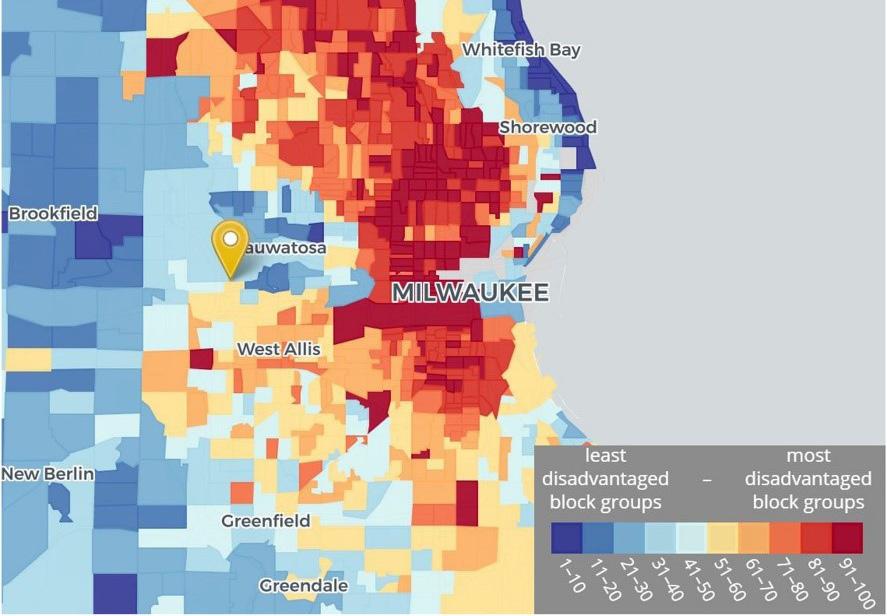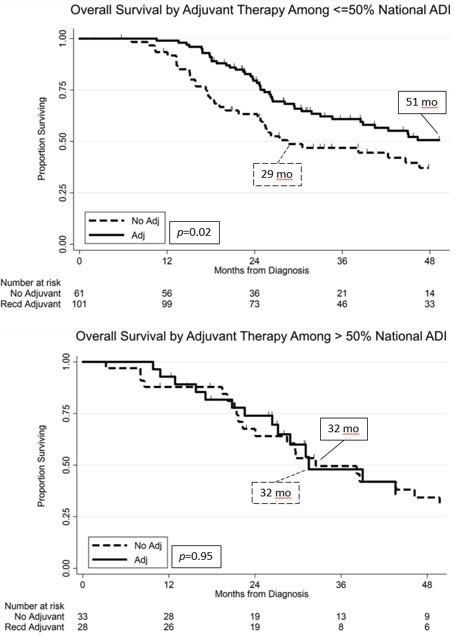
5 minute read
Social Adversity is Part of the Disease: Healthcare Disparities Among Patients with Pancreatic Cancer
Sam Thalji, MD
General Surgery Resident
Ashley Krepline, MD
General Surgery Resident
Over the past two decades, advancements in the understanding and treatment of pancreatic cancer have resulted in significant advancements for patients.1 The development of effective chemotherapy regimens, the growth of personalized medicine, and optimization of treatment sequencing have all contributed to patients living longer and with a higher quality of life.2,3,4 However, every component of care depends on our ability to deliver it to the patient. As the complexity of care increases, patients rely on a growing number of specialists in a multidisciplinary team setting, and it becomes more difficult to deliver these components to all patients in an equitable way. Healthcare disparities arise when some patients are left behind due to social, environmental, or economic disadvantages. The challenge will be to make these advancements obtainable for all patients.
People of color and those from lower socioeconomic backgrounds have long experienced poor health outcomes.5 Patients with cancer are especially vulnerable to healthcare disparities and the gap is widening.6 Race, insurance status, and geographic location often play a primary role in the type and quality of care received for pancreatic cancer.7 Black Americans receive less aggressive stage specific treatment, lower rates of surgery, and have surgeries performed in lower volume centers.7 Food insecurity is particularly threatening to patients with cancer, and there is evidence that the prevalence of food insecurity among cancer patients is higher than national or local averages.9,10 A recent publication by MCW and the LaBahn Pracreatic Cancer Program examined the effect of socioeconomic status on patients treated here, utilizing the neighborhood-level Area Deprivation Index (ADI), which is a validated measurement of neighborhood socioeconomic adversity (Figure 1).11 Patients who received neoadjuvant therapy and surgery for localized pancreatic cancer were stratified into a low-ADI (non-disadvantaged) or high-ADI (disadvantaged) neighborhoods based on the national median ADI. High-ADI patients were more likely to be non-white and were 55% less likely to receive postoperative (adjuvant) therapy than low-ADI patients, even despite no differences in disease characteristics or in the preoperative and perioperative care received. Importantly, low-ADI patients had a significantly increased median overall survival when adjuvant therapy was administered; this effect was absent among the high-ADI patients (Figure 2), suggesting that socioeconomic disadvantages may abrogate the benefit of adjuvant therapy. Understanding the impact of socioeconomic factors on oncologic care is an important first step in identifying how extrinsic factors affect the care of our patients so that we may identify impediments and design interventions.
The MCW Cancer Center provides several resources for patients with socioeconomic needs. Patients are supported by a large team including dedicated cancer care social workers, clinical psychologists, dieticians, financial counselors, and navigators. The programs have expanded to offer mental health counseling, cognitive behavioral therapy, art therapy, message therapy, and acupuncture. Screening and identifying social vulnerabilities are the first steps toward connecting patients to these resources. All patients are screened at intervals along their care for emotional, mental, and practical concerns. Those patients who meet criteria (or are identified by the treatment team to potentially benefit) are connected to a social worker for a full evaluation of the patient’s social determinants of health. Certain diagnoses (advanced stage primary brain cancer, sarcomas, and patients who have received bone marrow transplants) are automatically forwarded to social workers, and efforts are in place to add patients with pancreatic cancer to this list.
Once specific needs are identified, social workers are
Susan Tsai, MD, MHS
Professor, Division of Surgical Oncology; Director, LaBahn Pancreatic Cancer Program; Chief, VA Hepatopancreaticobiliary Surgery

Figure 1: National ADI decile ranking of Milwaukee County census block groups (Location marker - Medical College of Wisconsin)

Figure 2: Overall Survival among ADI groups by receipt of adjuvant therapy able to connect patients to a wide range of internal and external resources. Grants on the national and local level, as well as from the Froedtert Hospital Foundation, are carefully curated. These grants provide funds directly to patients for rent, mortgage payments, groceries for the patient and dependent family, utilities, gas and other transportation services, childcare, and general stipends. The Cancer Center works directly with the Housing Authority to arrange subsidized and family housing. Froedtert has helped to fund the expansion of Kathy’s House into a new facility on campus where patients and families traveling to Milwaukee may stay and support each other together. The Sixteenth Street clinics have received funding from Froedtert and MCW to extend their mission toward serving patients in Milwaukee despite barriers of language, insurance, and undocumented status. Among other achievements, the Sixteenth Street clinics have increased rates of colorectal and other cancer screenings for groups that have traditionally experienced the lowest screening rates.
The social issues facing our patients are dynamic, and several ongoing research efforts aim to improve our understanding of the complexities specifically facing the patients at MCW. There is an abundance of population-level data on healthcare disparities for pancreatic cancer, but in order to best serve our patients we must also understand the individual perspective. In collaboration with the Department of Family and Community Medicine, the Department of Surgery is working to develop a new model of care that pairs access to social resources and psychological support. The goal is to design and implement a comprehensive personalized approach to resource management and patient empowerment to address unmet needs. Veterans are another group shown to be at greater risk for healthcare disparities. An ongoing project at the Milwaukee
VA seeks to improve coordination of social resources for veterans with a new diagnosis of cancer. The Veterans Health Administration has been at the forefront of managing issues of housing and food insecurity among veterans in the primary care setting, but these efforts are often lost in the shuffle during the transition to the cancer care setting. We are working to design a system of cross-disciplinary collaboration among the primary care providers and social workers to continue to address social issues for Veterans along with their cancer treatment. These efforts have involved in-depth individual patient-level exploration of how social determinants of health are colored by the community and cultures in which patients are embedded. We have found that the more we learn directly from patients, the better we are able to describe and define the scenarios in which care can be negatively impacted – and subsequently we can better design interventions that will support these issues. Improvements made in the care process will hopefully benefit patients and families even beyond their cancer diagnosis.
As we begin to understand how the intersection of socioeconomic status affects medical care, the boundaries between management of disease and management of socioeconomic distress will become increasingly blurred. Ideally, a comprehensive and holistic approach to “patient-centered” care will seamlessly integrate social services to best meet the needs of our patients. Until then, further research is needed to understand the complex and multifaceted barriers to care.
FOR ADDITIONAL INFORMATION on this topic, visit www.mcw.edu/surgery or contact Dr. Susan Tsai at stsai@mcw.edu.




